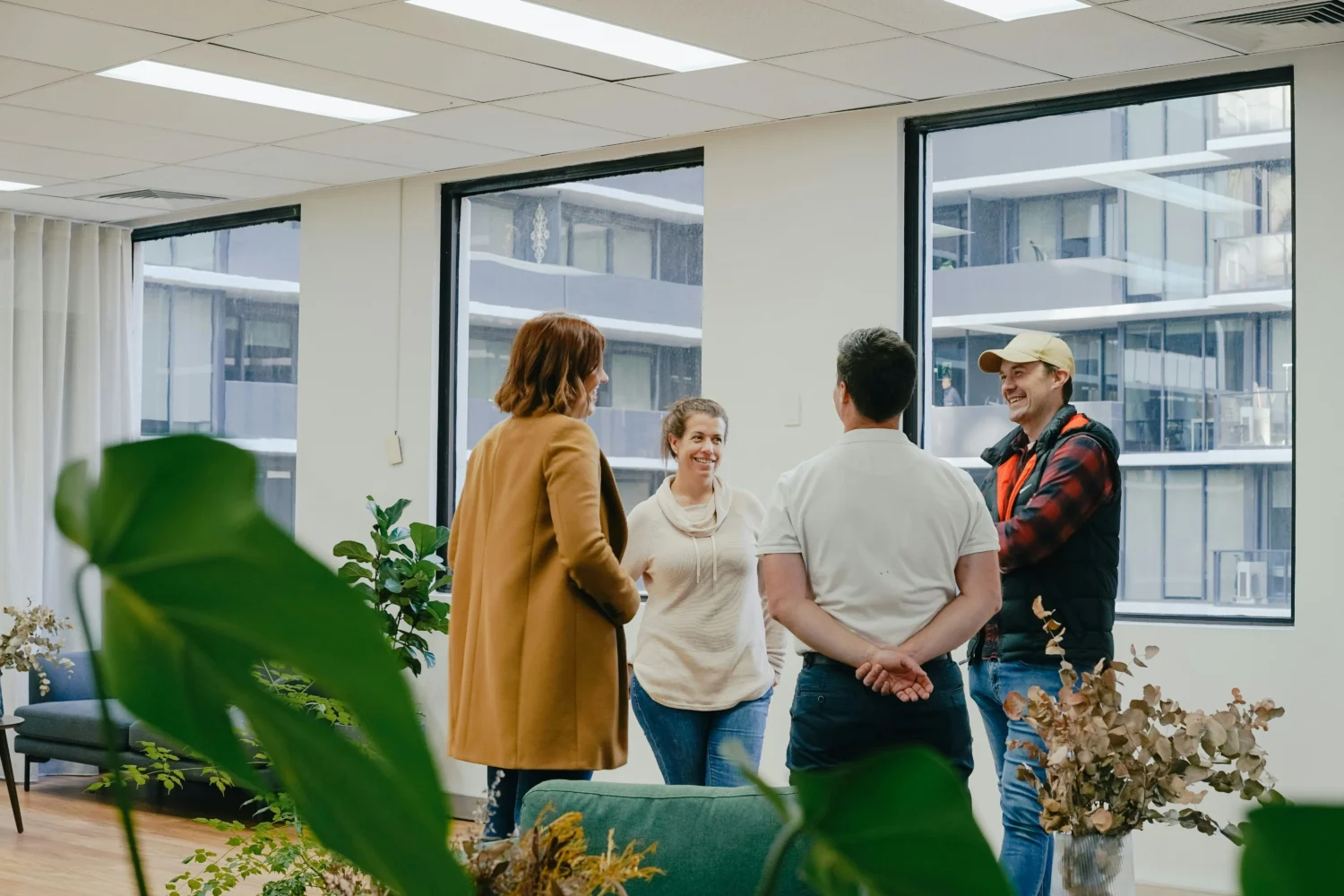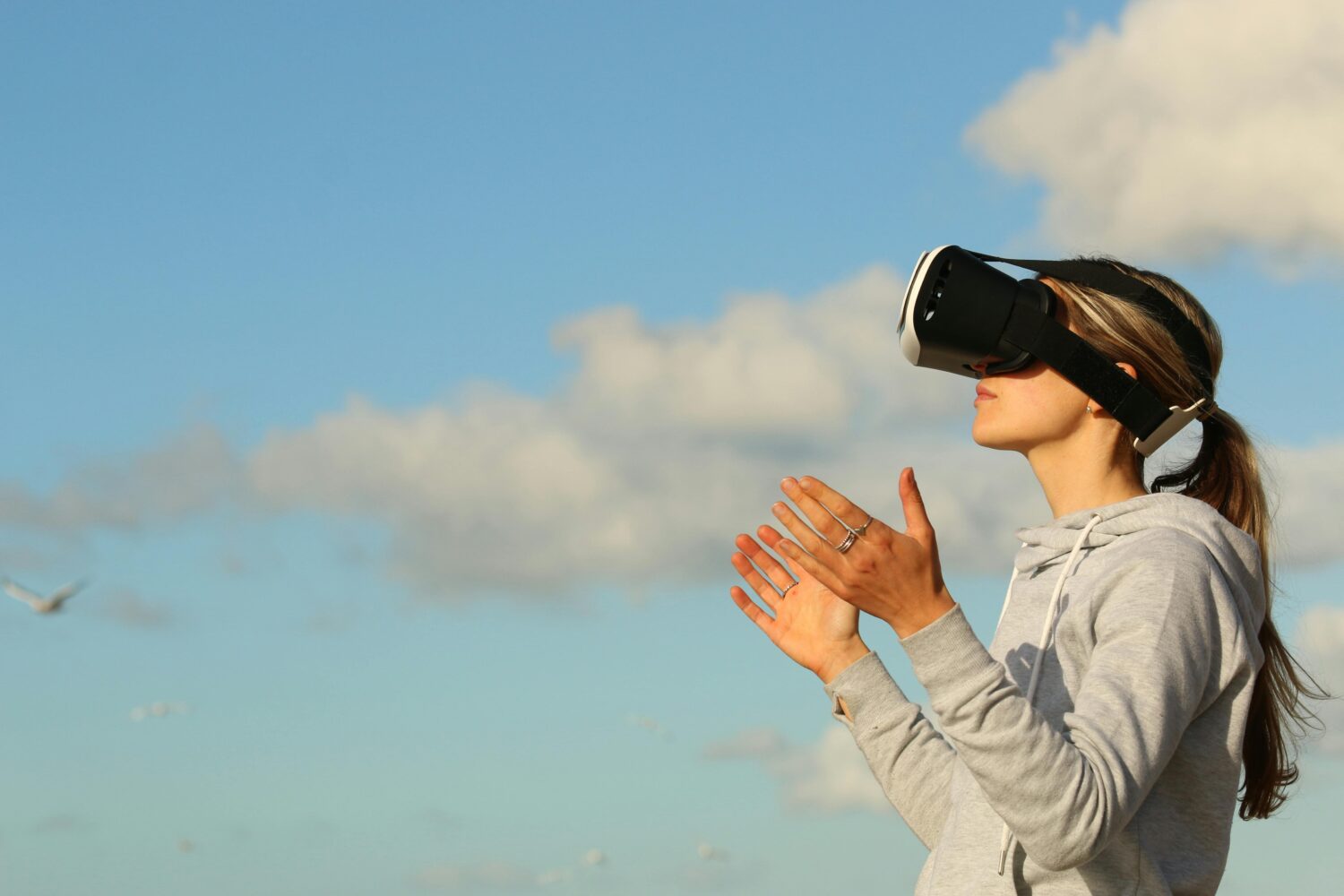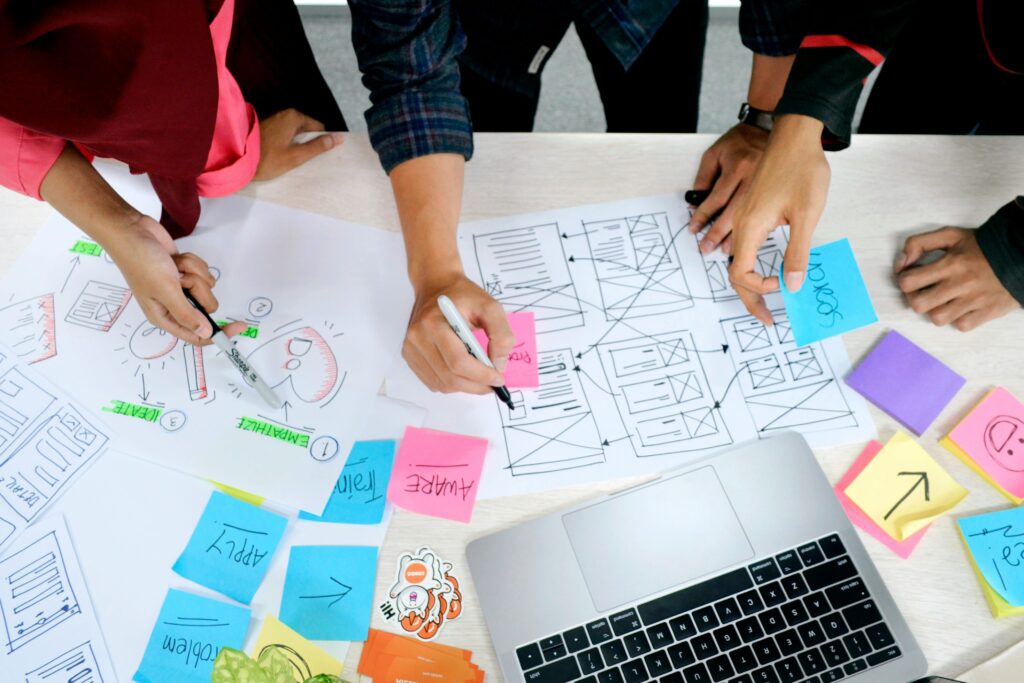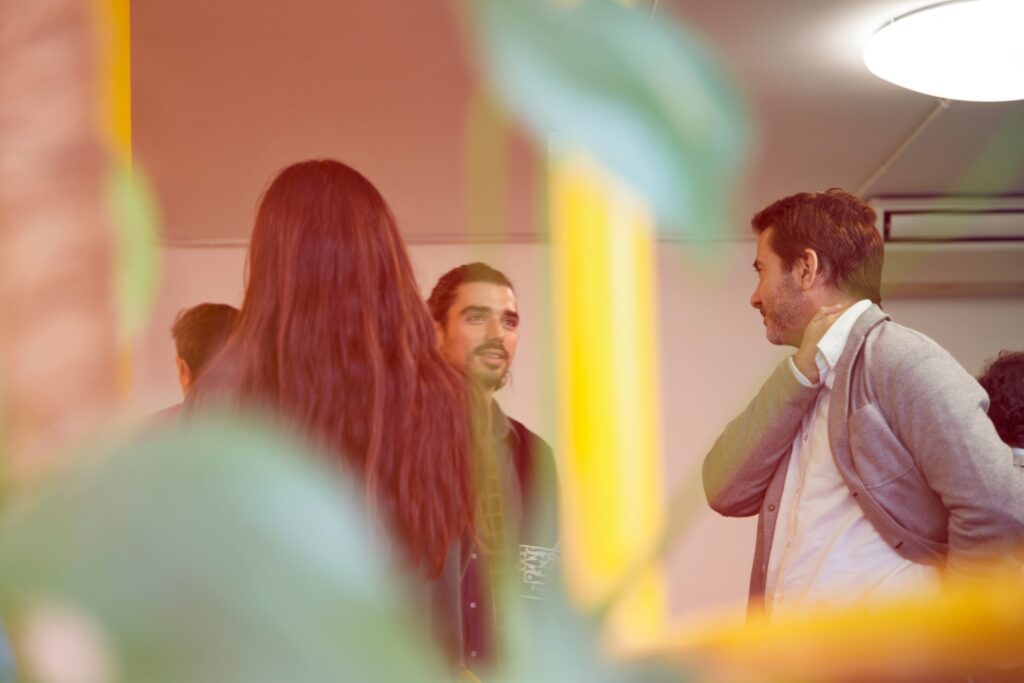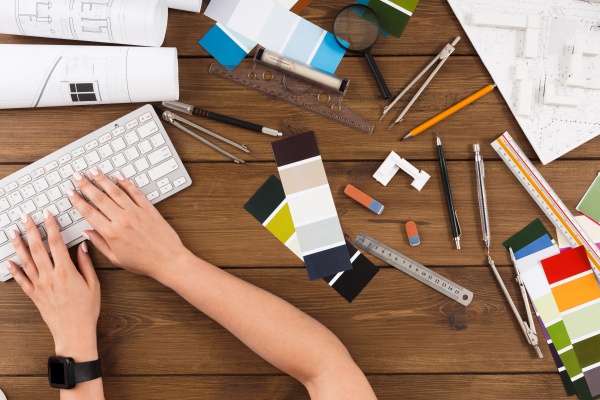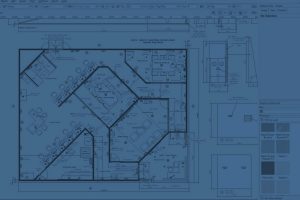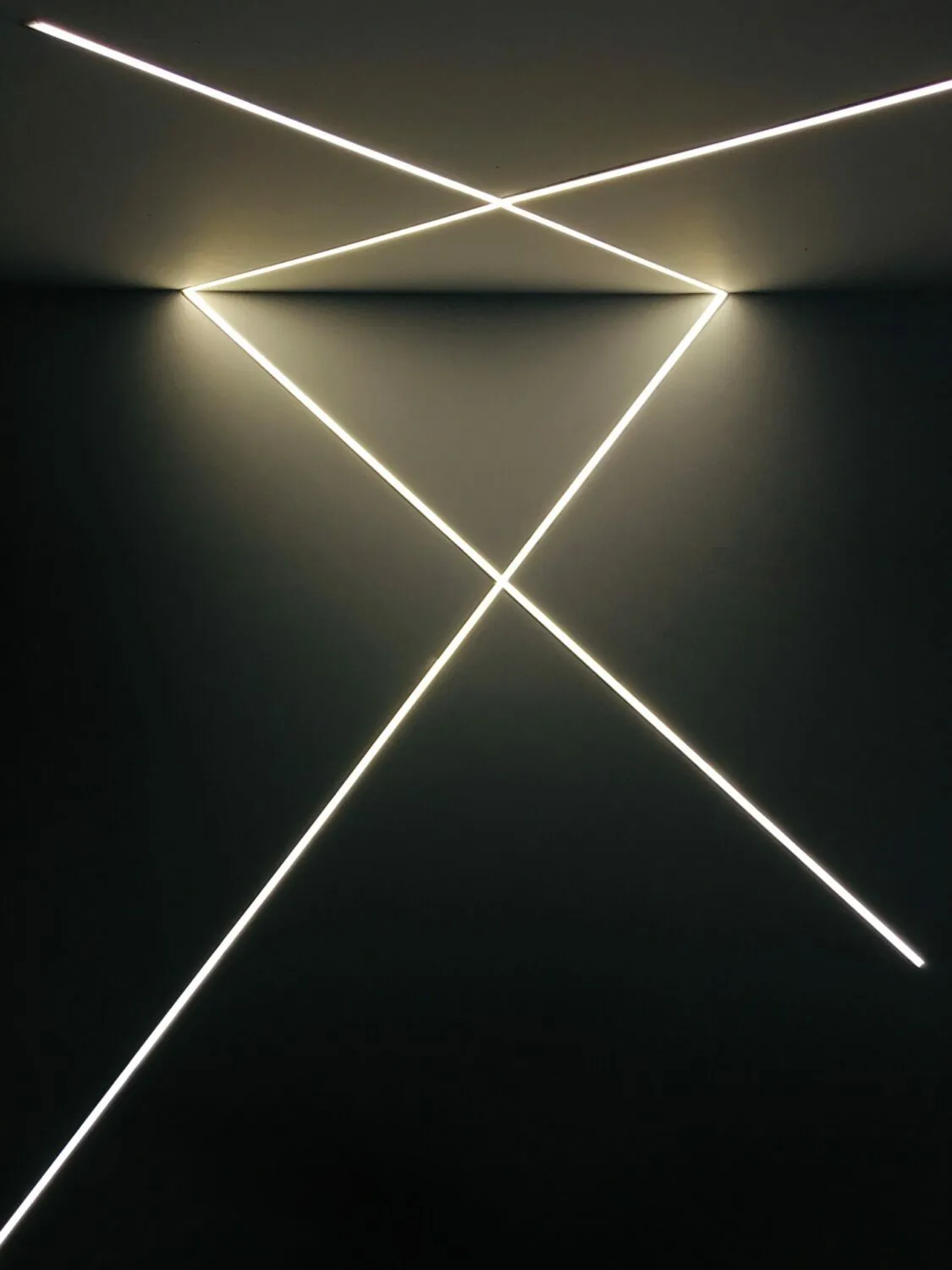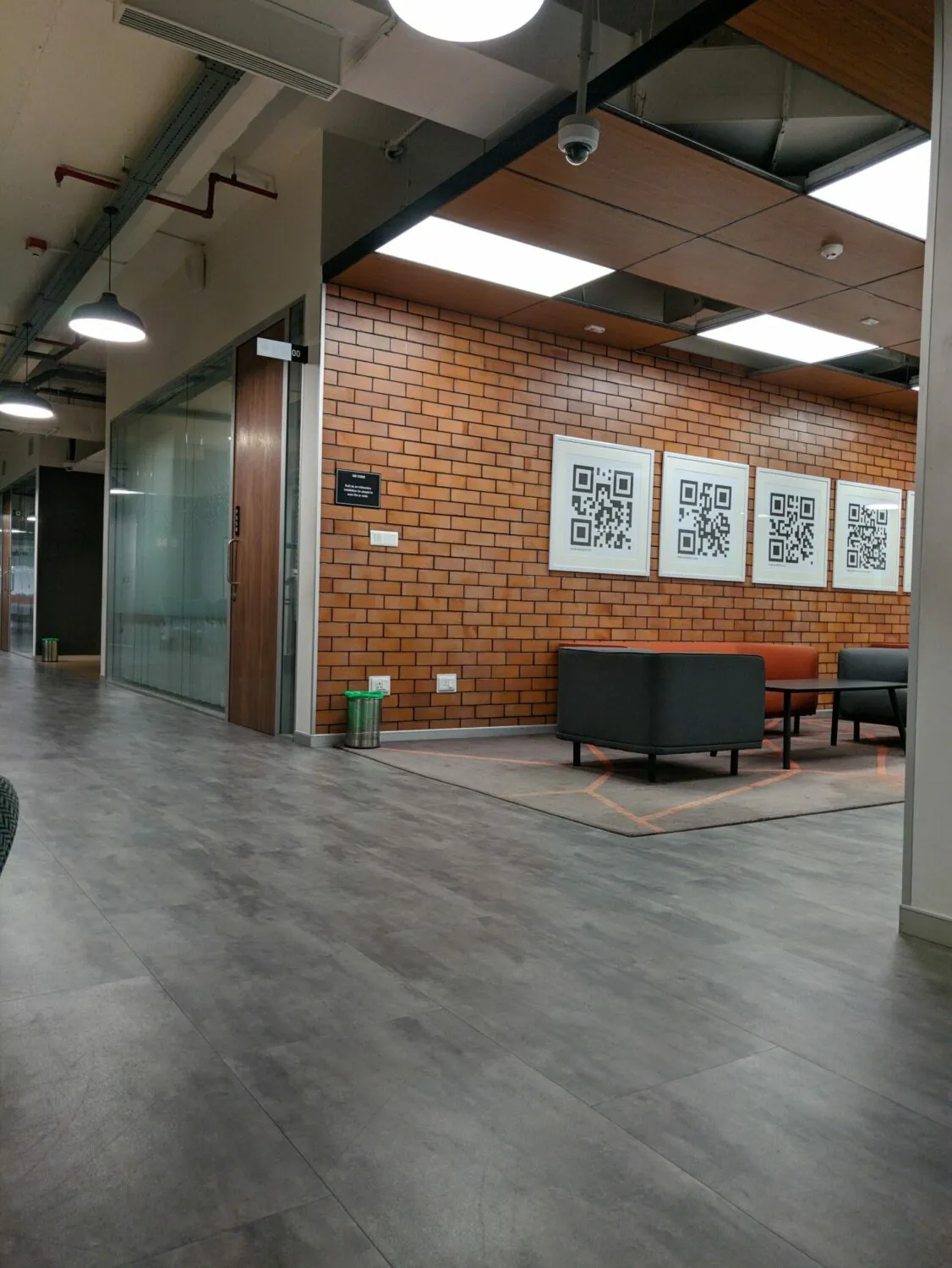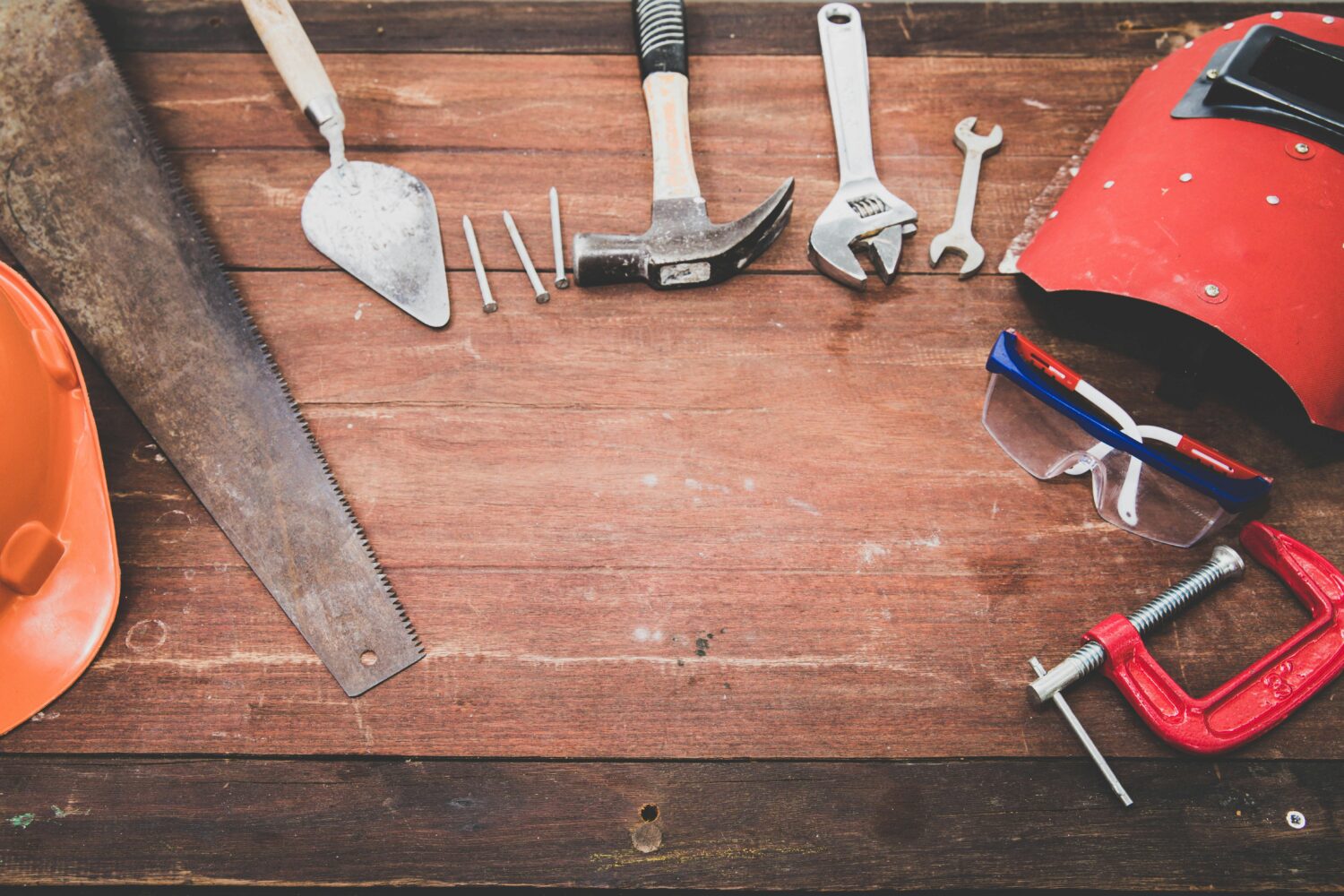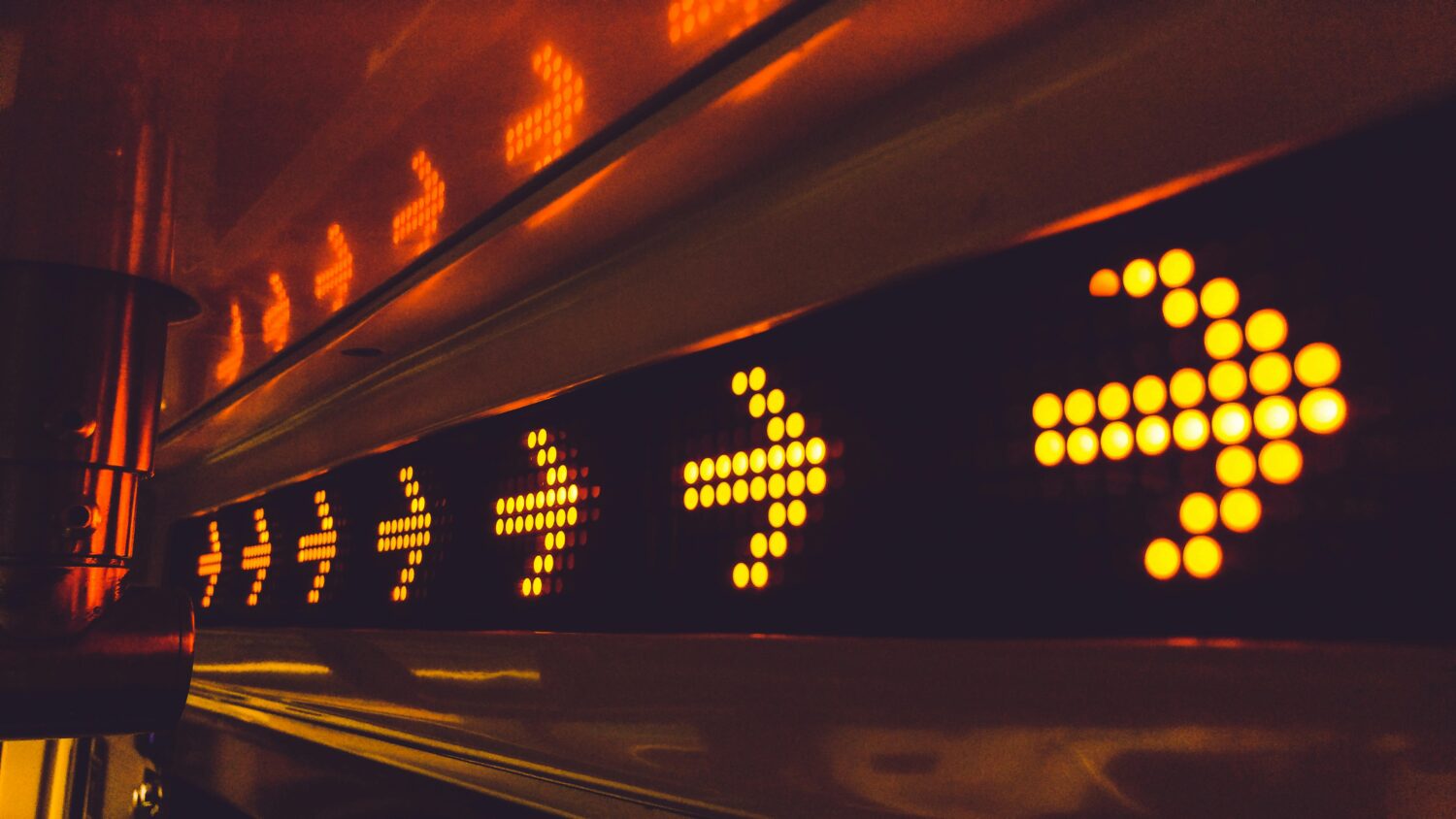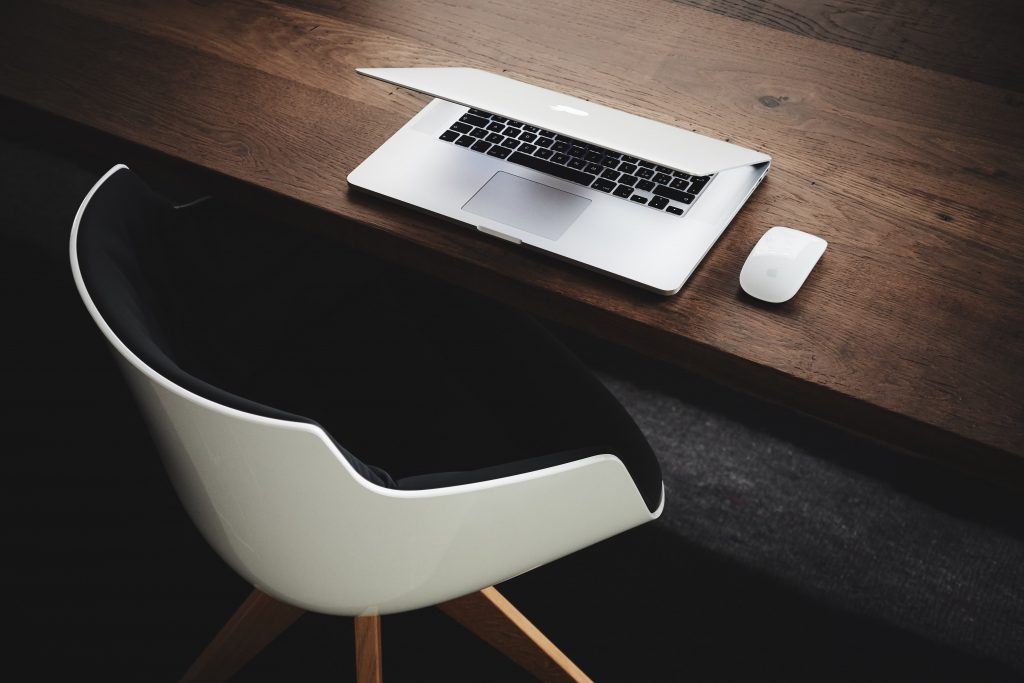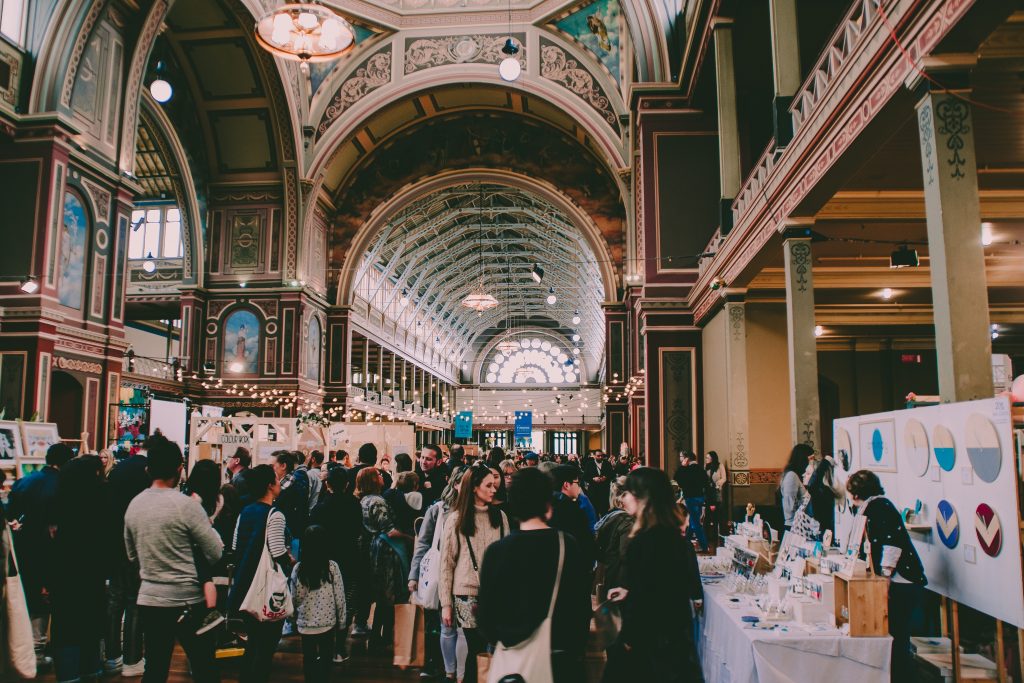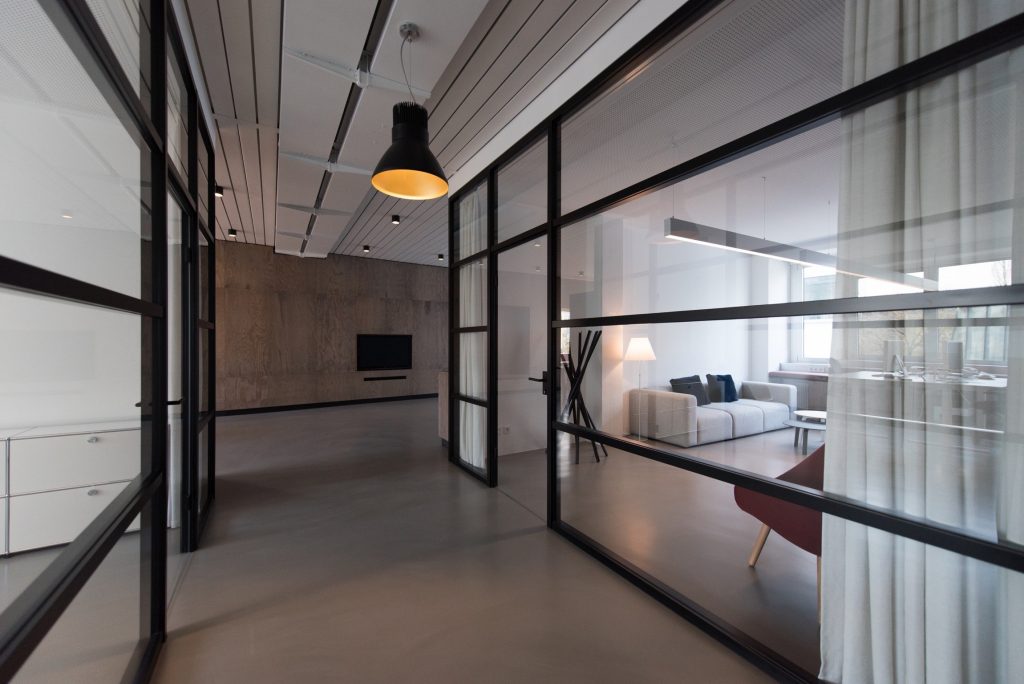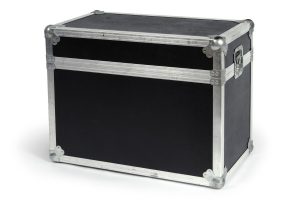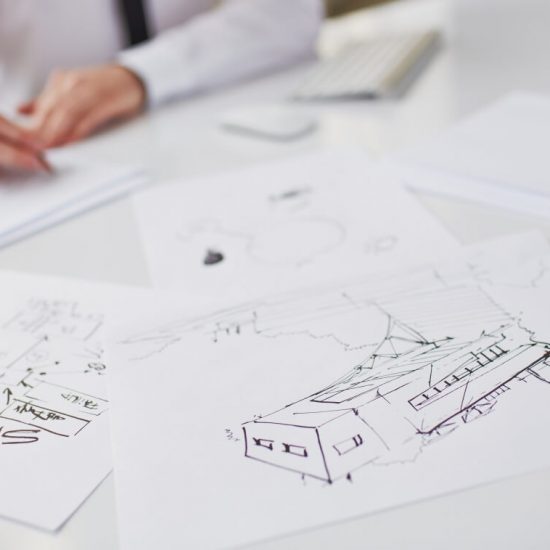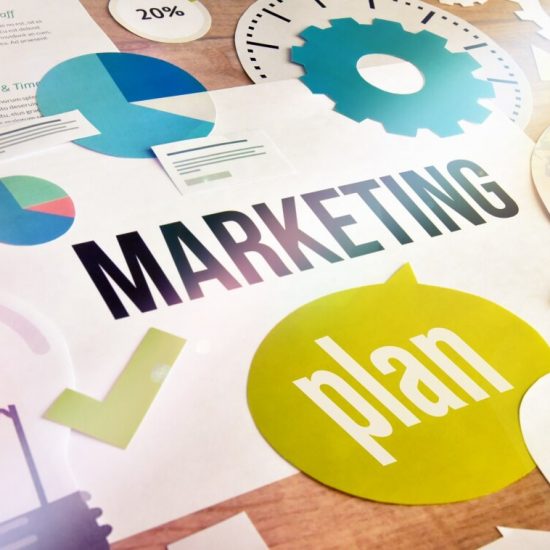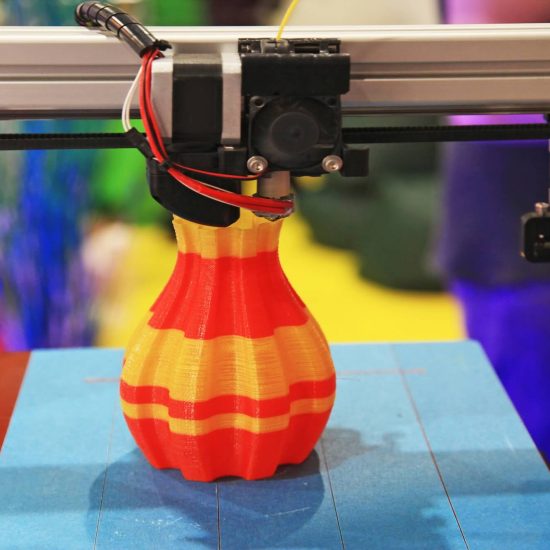Understanding custom exhibition stands
Custom exhibition stands are all about innovation and individuality in the world of trade shows and exhibitions. Unlike modular or pop-up stands that come in standard shapes and configurations, custom stands are designed from scratch. That ensures every element is aligned with the brand’s identity and goals, as well as the specific audience you intend to engage.
What makes custom stands unique?
Here’s how custom stands differ from more traditional applications.
Tailored design
Every aspect of a custom exhibition stand can be tailored. Floor plans, wall heights, types of lighting fixtures, interactive elements – it’s all created to enhance your brand’s marketing message. This high degree of customisation ensures that no two stands are alike. That gives the unique aspect you need to capture attention in a busy exhibition hall.
Incorporation of branding
Custom stands allow for seamless integration of corporate branding. Whether through colour schemes that align with the company’s logo, branded touchpoints, or the architectural embodiment of the brand’s values, your custom stand acts as a three-dimensional branding tool.
Adaptability and functionality
Beyond aesthetics, custom stands provide functionality tailored to your company’s objectives. For instance, if product demonstrations are a key component of your marketing strategy, the stand can be designed with integrated demonstration areas. Alternatively, if networking and meetings are essential, private meeting rooms within the stand can be included.
Innovative use of materials and technology
Designers of custom stands can explore innovative materials and cutting-edge technologies to enhance both functionality and appeal. Eco-friendly materials can be used to appeal to environmentally conscious brands and attendees, for example. Technological integrations such as augmented reality experiences, touchscreen kiosks and digital product displays help make the stand more interactive and engaging.
Advantages of custom exhibition stands
Custom stands come with a number of key benefits. All taken together, they add up to a huge boost when it comes to getting your message out there.
A unique visitor experience
Custom exhibition stands are crafted to create a memorable experience for your visitors. By using engaging design elements that trigger emotional responses, they make the visit more memorable in the sensory overload of a large exhibition.
Alignment with strategic goals
These kinds of stands go beyond mere visual appeal; they are strategic tools designed to achieve specific business outcomes. That can mean lead generation, direct sales, brand awareness or customer education.
Flexibility and scalability
Though initially designed for a particular event, many components of a custom stand can be reconfigured or updated for future use. This allows your business to maintain consistency in branding across different shows, while adapting to new themes or products.
A competitive edge
In crowded exhibition venues, having a stand-out stand really matters. Creativity, innovative design and alignment with brand values can attract more visitors and potentially convert them into customers.
Understanding these facets of custom exhibition stands helps brands and companies comprehend not just what makes them special, but how they serve as crucial instruments in an overall marketing strategy. Investing in a custom-designed exhibition stand can signal a significant commitment towards expanding visibility and deepening engagement.
With the case for custom stands set out, let’s move onto the process of making it happen, from financial considerations (ROI, budget) to design and build. Included in the process is the logistics and evaluation considerations, from both the exhibitor’s and the attendees’ perspectives. Only quantitative and qualitative assessment and improvement can keep your stand sustainable.
1. Setting clear objectives
Before diving into designs and materials, you first need to define what you want to achieve. Are you launching a new product? Increasing brand awareness? Generating on-site sales or leads? Your goals will dictate the form and function of your exhibition stand.
For example, a stand designed for direct sales will need accessible product displays and private areas for discussing contracts. In contrast, a stand focused on brand introduction might invest more in interactive digital presentations.
2. Establishing your budget
Budgeting is critical. Custom stands vary considerably in cost, depending on size, materials, technology and complexity. Early budget decisions help design teams create realistic proposals that align with financial constraints. Don’t forget to factor in other expenses such as transportation, installation, staff training and storage for your stand components.
3. Choosing the right design and fabrication partner
Selecting the perfect design partner is a critical decision that could determine the overall success of your trade shows and exhibitions. Partnering with professional stand designers and manufacturers is indispensable because they bring a blend of creativity, industry knowledge and technical expertise that transcends the layperson’s understanding.
Depth of experience
Professional exhibition stand designers and manufacturers have a wealth of experience in the field. That translates into an ability to handle various scenarios that might arise before, during or after the exhibition. Their extensive portfolios are proof of their capacity to deliver quality and diversity in designs tailored to client needs. These professionals are familiar with the dynamics of trade shows, knowing what it takes to make a stand not only visually attractive but also effective in pulling traffic.
Understanding of industry compliance and quality standards
A professional partner understands regulatory compliance issues related to materials, safety and design standards at various venues. They also have quality assurance processes in place to ensure that every aspect of the stand, from structural integrity to fire safety, is up to standard. This prevents legal issues that may arise from non-compliance while ensuring the safety of staff and visitors.
Comprehensive services
There are also specific benefits from choosing a professional partner that indicate they’re the real deal:
- Integrated solutions: Professional design companies offer full-scale services that cover the entire spectrum from concept development to physical construction, and even post-event services such as dismantling and storage. Dealing with one provider who can handle all aspects can streamline communication and reduce errors. That makes them more cost-effective.
- Access to advanced design technologies: Professional partners spend resources on the latest design technologies including advanced software for 3D rendering and virtual walkthroughs, which allow you to visualise your stand before it’s built. This can play a crucial role in decision-making and modifications without the cost implications of physical alterations.
- Material innovation: Experienced designers continuously explore new materials and technology that stand out from a visual perspective. The level of innovation seen in a stand can bring a competitive edge in the exhibition environment.
Choosing wisely
When selecting a professional design partner:
- Evaluate their portfolio for versatility and innovation.
- Check for testimonials, case studies and references.
- Discuss their approach to design challenges and project management.
- Understand their capabilities regarding logistic support, if relevant.
Given the complexities involved in creating successful exhibition stands, working with professional stand designers and manufacturers isn’t just an option – it’s a necessity. These experts bring not only their skills but also a profound understanding of how physical spaces can be transformed into immersive brand experiences that draw visitors and create memorable interactions. By selecting the right professional design partner, you’re investing in both the immediate success at the exhibition and the long-term impact on your brand’s presence.
4. Developing the design
This stage melds creativity with strategy. A skilled designer will translate your objectives and brand personality into a functional space. This phase typically involves:
- Concept development: Brainstorming sessions between you and the designers.
- 3D rendering: Visualising the space so you can explore how it feels without physically building it.
- Revisions: Amending details before finalising the design. This iterative process ensures the stand aligns perfectly with expectations.
5. Crafting the user experience
When creating custom exhibition stands, the design goes beyond just aesthetics and functional considerations; it’s about crafting a compelling user experience (UX) that resonates with attendees. Successful UX on a trade show floor is crucial for engaging visitors effectively and immerses them into the brand world uniquely and memorably.
Strategy behind user experience
- Identify the audience: The first step toward designing a good UX is understanding who will be attending the exhibition. Different audiences will have different preferences and behavioural patterns. For instance, tech-savvy visitors might appreciate interactive digital elements, while industry professionals might value efficient layouts that promote quick information gathering and networking.
- Visitor journey mapping: This involves plotting out all interaction points that a visitor might have with your stand. From the initial visual attraction to the engagement at different sections of the stand, and even the exit or follow-up touchpoints – every step offers a chance to leave a lasting impression.
- Engagement points: Identify and design key points where you can engage with visitors. This may include demo stations for trying out products, interactive screens, informal zones where discussions can take place, or live presentation areas for demonstrations or talks.
Elements of a great user experience
- Visually stimulating design: The colours, materials and lighting should not only embody the brand identity but also attract attention from a distance, guiding visitors to the stand itself.
- Interactive components: Interactive elements such as touch screens, augmented reality experiences or product trials keep visitors engaged and help them feel an active part of the experience rather than just being onlookers. These elements can be both informative and entertaining.
- Content delivery: How the stand delivers content can significantly affect visitor engagement. Digital content should be concise, appealing and tailored to the audience’s interests. Physical content, such as brochures or product samples, should be easy to access and carry.
- Comfort and navigation: Comfortable seating areas, uncluttered spaces, clear signage for navigation, and possibly even refreshments, can make visits more enjoyable and prolong engagement with your brand.
- Personal interactions: Well-trained staff who are friendly, knowledgeable and welcoming can significantly enhance the user experience. They act as brand ambassadors who personify your business’s values.
Evaluating impact
- Feedback mechanisms (including a means for feedback) within your stand can provide invaluable insights into user experiences. Digital surveys or quick feedback stations can help understand what worked and what didn’t.
- Observing how attendees interact with different areas of your booth provides real-time feedback on user experience. Noting issues can help identify problems in design and also highlight successful features.
Continual improvement
By using insights gathered from one exhibition to inform decisions in the next, you can continuously refine your stand, gradually enhancing both form and function. With each iteration, the stand design can become more visitor-centric, thus improving the overall effectiveness of exhibition participation.
Crafting the UX in custom exhibition stands is not just about building a structure but creating an environment that embodies the essence of your brand while being attuned to the visitor needs. This regard for interactions ensures more than just foot traffic; it cultivates engagement necessary for lasting business relationships.
6. Logistics and installation
Once designed and fabricated, focus shifts towards making sure everything comes together at the venue smoothly:
- Transport: Ensuring safe, timely arrival of stand components.
- Assembly: Professional setup to avoid any structural issues.
- Troubleshooting: Rapid response teams to solve any day-of-event complications.
7. Final checks and reuse strategy
Never overlook the importance of walking through the assembled stand before the show begins. This is when adjustments can be made without the pressure of an audience. Additionally, discuss strategies for reusing components in future shows – a great way to maximise return on investment.
8. Effective post-show follow-up
The event might be over, but there’s work left to do! Post-exhibition follow-ups can help gauge the success of your stand.
- Collect feedback from visitors and staff.
- Assess whether objectives were met.
- Research ways to improve for future exhibitions.
Beyond its function as a marketplace tool, a custom exhibition stand is a reflection of how state-of-the-art design blends with strategic marketing objectives. Finding an experienced partner can bring untold benefits to your stand, which means your return on investment is much more likely to be healthy.


